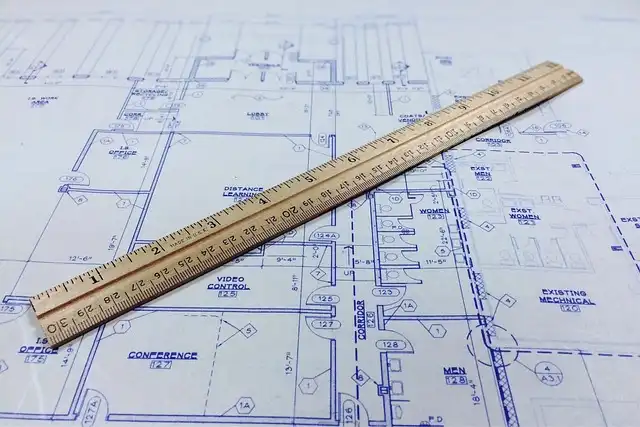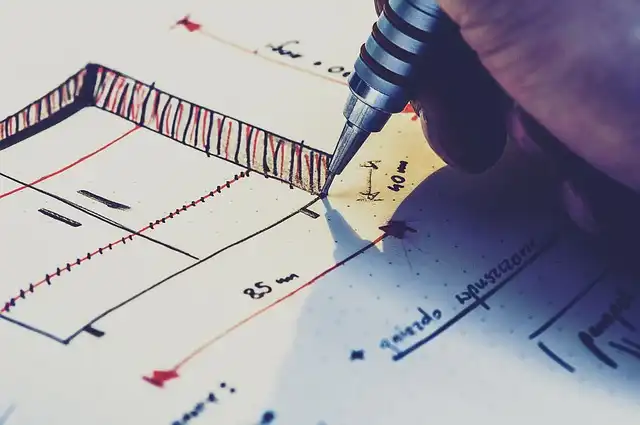Engineering blueprints are essential for construction, manufacturing, and industrial projects. When dealing with Chinese engineering documents, accurate translation into English ensures seamless collaboration, compliance, and execution. But how can you provide precise and efficient translations?
Translating Chinese engineering blueprints into English requires technical knowledge, precision, and industry expertise. Errors can lead to construction delays, safety issues, or legal problems.
To ensure quality and compliance, always:
✅ Work with engineering-trained translators
✅ Use technical glossaries and standardized terms
✅ Convert units, symbols, and notations accurately
✅ Conduct bilingual review with engineers
✅ Leverage CAD translation tools for efficiency
Common Challenges in Blueprint Translation
Translating Chinese engineering blueprints into English is more than just converting words—it requires expertise in technical terminology, industry standards, and engineering drawings. A minor error in measurement, material specification, or annotation could lead to costly mistakes.
According to a 2023 industry report, 65% of engineering translation errors occur due to misinterpretation of technical symbols and abbreviations. Since China uses GB standards, while the U.S. and Europe follow ISO, ASTM, or ANSI, incorrect conversions can cause compatibility issues.

Technical Terminology Variance: Chinese terms may not have direct English equivalents.
Measurement Units Differences: China primarily uses the metric system (GB/T standards), while English-speaking countries may use both imperial and metric.
Abbreviations and Symbols: Some Chinese blueprint symbols differ from ISO or ANSI equivalents.
Handwritten Notes and Annotations: Often difficult to decipher, requiring engineering knowledge for accurate translation.
Best Practices for Translating Chinese Engineering Blueprints
To ensure precision in blueprint translation, follow these industry best practices:
1. Work with Specialized Technical Translators
- Engineering blueprints require professionals with engineering backgrounds, not just general translators.
- Look for translators experienced in civil, mechanical, or electrical engineering.
- Certifications like ATA (American Translators Association) or CIOL (Chartered Institute of Linguists) can indicate expertise.
2. Use Standardized Technical Glossaries
- Consistency is key. Use a standardized glossary of engineering terms to avoid ambiguity

Examples:
Chinese: 直径 (Zhíjìng) → English: Diameter (Ø)
Chinese: 负载 (Fùzài) → English: Load Capacity
Chinese: 焊接 (Hànjiē) → English: Welding
📖Here are some helpful links for creating and using standardized technical glossaries across various fields:
1. IEEE Standards Glossary (for Engineering and Technology)
- IEEE Standards Glossary
- The IEEE offers a comprehensive set of standardized terms and definitions related to electrical engineering, computer science, and telecommunications.
2. ISO Technical Glossary (for International Standards)
- ISO – International Standards Organization
- ISO provides a framework for creating consistent definitions and terminology that can be adopted globally across industries.
3. Medical Terminology Glossary (for Healthcare and Medicine)
- U.S. National Library of Medicine’s Medical Terminology
- A resource that provides standardized medical terminology, helping professionals and patients understand medical terms.
4. Legal Glossary (for Legal Terms)
- Nolo Legal Dictionary
- A comprehensive legal glossary used to standardize legal terms and improve understanding for both legal professionals and the public.
5. Technical Writing Glossary (for Writers and Content Creators)
- TechWhirl Glossary
- Provides technical writing tools and glossaries for writers to standardize terms and definitions in user manuals and other technical documentation.
6. Financial Terminology Glossary (for Finance and Accounting)
- Investopedia Glossary
- A highly recognized glossary for standardized financial and economic terms, used by professionals and students alike.
7. Government and Standards Terminology (for Public Policy and Administration)
A resource for standardized terminology used by the UN for global communication, policy development, and international cooperation.
3. Convert Measurement Units Accurately
- China follows GB/T (Guobiao) standards, while international projects may require ISO, ASTM, or ANSI.
- Example:
- Metric (China): 1200 mm → Imperial (USA): 47.24 inches
- GB Bolt Standard: M16 → Equivalent ISO Standard: M16 × 2
4. Verify Symbols and Annotations
- Blueprint symbols may vary across regions. Some need conversion to ISO/ANSI equivalents.
- Cross-check engineering drawings to ensure standard alignment.
5. Leverage Translation Technology for Accuracy
- CAD-based translation tools like AutoCAD Translator, ABBYY FineReader, or Trados Studio help extract and translate blueprint text while preserving layout.
- Optical Character Recognition (OCR) tools can convert handwritten annotations into editable text.
How to Ensure Quality Control in Blueprint Translation?
Even a small error in engineering translation can result in misconstruction, material waste, or legal liability. To maintain accuracy:
1. Implement a Review and Proofreading Process
- Conduct a bilingual review with engineering professionals.
- Use back-translation (retranslating English back to Chinese) to check for discrepancies.
2. Collaborate with Engineers for Validation
- Involve bilingual engineers or technical consultants in verification.
- Engineers can confirm that translated terms match functional intent.
3. Standardize Formatting and Layout
- Maintain original blueprint structure to ensure readability.
- Use layered translations in CAD files to avoid losing important details.
What Are the Key Differences Between Chinese and Western Engineering Blueprints?
1. Blueprint Drafting Standards

China uses GB/T Standards, while:
U.S. follows ANSI, ASME, and ASTM.
Europe follows ISO and EN standards.
2. Notation Style and Symbols

Some symbols in Chinese blueprints differ from ISO/ANSI equivalents.
Example:
Chinese Blueprint Symbol: “Φ” (diameter)
ISO Equivalent: “Ø” (diameter)
3. Units of Measurement
- China: Metric system (mm, cm, m).
- U.S.: Uses both metric and imperial (inches, feet).
4. Language and Terminology Differences
- Chinese engineering terms sometimes have no direct English translation.
- Example:
- Chinese: 强度极限 (Qiángdù jíxiàn) → English: Ultimate Strength
How Much Does It Cost to Translate Engineering Blueprints?
The cost of translating engineering blueprints depends on:
- Blueprint complexity (detailed mechanical vs. simple civil drawings).
- Translation method (manual vs. AI-assisted).
- Urgency and volume of documents.
Pricing Estimates:
- Standard CAD Blueprint Translation: $0.12 – $0.20 per word
- Handwritten Notes & Annotations: Additional 10-20% fee for OCR processing
- Certified Engineering Translation: $50 – $100 per page
For bulk projects, many translation agencies offer discounts.
Where to Find Professional Chinese Blueprint Translators?
For accurate and high-quality engineering blueprint translations, consider:
1. Professional Translation Agencies
- AZ-Loc – Specializes in engineering and technical translations.
- Gengo, TransPerfect, and Lionbridge – Offer industry-specific translations.
2. Freelance Technical Translators
- Platforms like ProZ, Upwork, or Fiverr provide access to engineering translators.
- Check reviews and certifications before hiring.
3. AI-Assisted & CAD Software Solutions
- AutoCAD Translator: Helps convert blueprint text within AutoCAD files.
- SDL Trados Studio: AI-powered tool for technical translations.
Need accurate blueprint translations for civil, mechanical, or electrical engineering projects? Contact our professional translation team today for precise, industry-compliant translations that ensure seamless global collaboration. 🚀
READ MORE:How Our Client Saved Thousands of Dollars from Chinese Mechanical Engineering Translation Work
